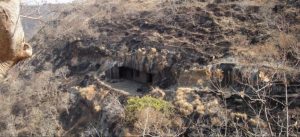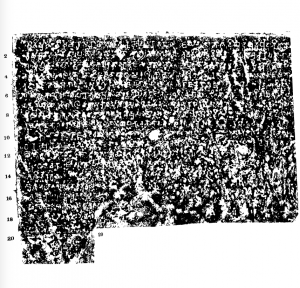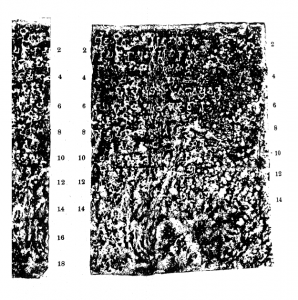


This stone inscription is carved onto the back wall of the veranda of the Ghaṭokaca cave at Gulwāḍā, which is a Buddhist site. The inscription, like those found at Ajaṇṭā, has been damaged by the weather, originally being 22 lines long, but now the last four lines are almost completely worn away. According to Shastri (1997: 44-45), the inscription was incised to record the excavation of the cave in which it is recorded and its donation to a Buddhist saṅgha, although the damage to the inscription over time has led to the details of the donation remaining unknown. The beginning of the inscription includes praise of the Buddha and a family history of Varāhadevā, a minister of the Vākāṭaka king, Hariṣeṇa.
First reported in Bradley 1857: 118 (as the cave of “Guttoor Duz” in Baitalbari). First edited (without facsimile) by Bhagwanlal Indraji in Burgess Indraji 1881: 88-90. Re-edited by Bühler in Burgess 1883: 138-140 with a facsimile (Plate 60) made by Indraji and “somewhat worked up by hand” (according to Mirashi 1963: 112), with a new facsimile in Mirashi 1952 and (finally) in Mirashi 1963. Discussed in Shastri 1997: 44-46. The cave is described in Fergusson Burgess 1880: 346-347.
Bradley (1857) 118
Fergusson Burgess (1880) :346-347
Burgess Indraji (1881) 88-90
Burgess (1883) 138-140
Bhandarkar (1929) 241, no. 1711
Mirashi (1963) 112-120, no. 26
Shastri (1997) 44-46